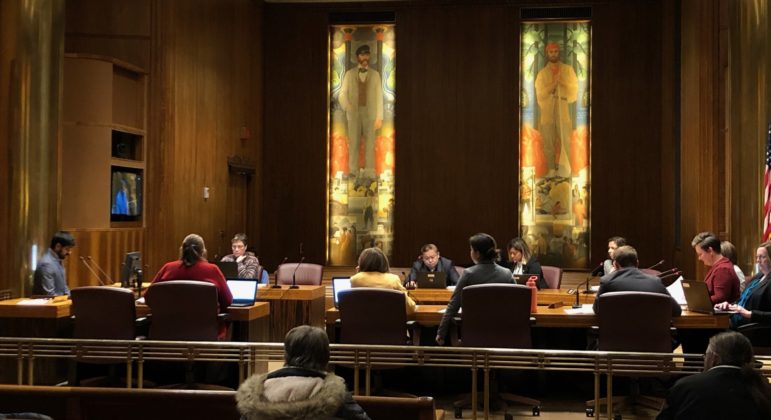
Saint Paul’s Climate Action Plan identified that 62 percent of the city’s greenhouse gas emissions come from building energy usage. We’re excited to see that the city is making moves to address this by more closely tracking energy usage in large buildings. We see this as a first step toward addressing some of these emissions and ultimately reducing energy consumption.
On January 15, the Saint Paul City Council heard public testimony on a “benchmarking” ordinance to compel buildings in Saint Paul to measure their energy and water performance via Energy Star Portfolio Manager, a U.S. Environmental Protection Agency (EPA) voluntary program, and on January 22 the city council voted 7-0 to adopt the ordinance. The EPA has found buildings that benchmark in this way can reduce energy consumption by about 2.4% annually. Just like writing down your food intake inspires you to eat less, building managers find that tracking energy use spurs new steps that increase efficiency.
While researching this proposal, Saint Paul city staff provided trainings on Energy Star Portfolio Manager to equip building managers to begin tracking their usage. Fresh Energy has been collaborating with the city for more than two years on this initiative and we’re pleased to see it coming to fruition.
At the January hearing, many city council members spoke in favor of the ordinance, as did Fresh Energy and other organizations that testified. Housing, business, and environmental perspectives —and even some former skeptics — all were represented and supportive.

In taking this action Saint Paul is following a national trend of cities passing benchmarking ordinances. So far more than 30 cities nationwide have passed similar ordinances, including Minneapolis, St. Louis Park, and Edina. Even though the ordinance has not yet passed, approximately 200 buildings in Saint Paul have benchmarked since 2018 through the city’s voluntary program, “Race to Reduce.”
While Fresh Energy is pleased with Saint Paul’s action, one aspect of the ordinance is not up to the level of other cities. Most cities that pass similar benchmarking ordinances require energy data disclosure, Saint Paul is instead making disclosure optional for building owners and operators.
“Fresh Energy considers public access to benchmarking data to be an important part of the overall process,” said Ben Rabe, director of built environment at Fresh Energy. “It allows community members to compare energy use among buildings and make informed decisions on their business and housing building considerations.”
Disclosure as well as benchmarking of energy use helps Saint Paulites compare energy use among buildings and provide resources to help lower-performance buildings improve. As Saint Paul’s benchmarking process continues, Fresh Energy will encourage the city to add data access to the mix.
Fresh Energy also looks forward to working with Saint Paul leaders to advance other tools for reducing energy use in buildings. Minneapolis, for example, expanded on its own benchmarking ordinance by passing “point of lease” and “point of sale” policies that allow prospective renters and homebuyers to understand their future utility costs.
